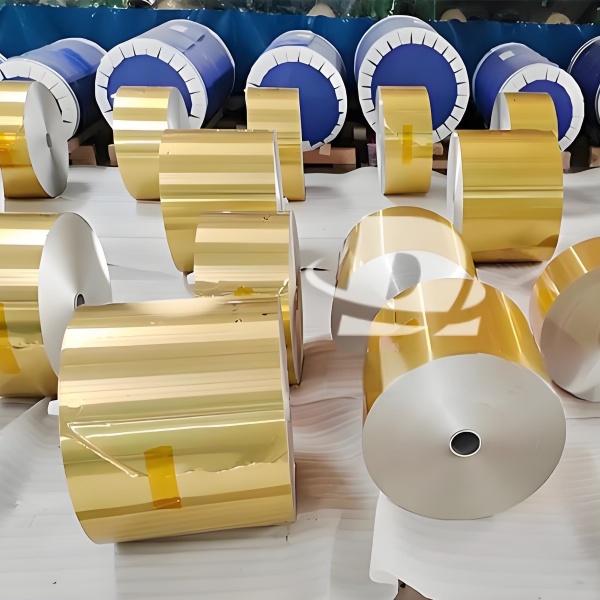.jpg) Aluminum Foil For Air Handling Unit Coils
Aluminum Foil For Air Handling Unit Coils
1.Aluminum foil for air handling unit coils Chemical composition
The alloy grades of aluminum foil for heat exchange fins are mainly 1100, 1200, 8011, etc. From the perspective of use, air conditioners do not have strict requirements on the chemical composition of aluminum heat exchange fins. Without surface treatment, 3A21 aluminum alloy has relatively good corrosion resistance, high mechanical properties such as strength and elongation, and high hardness. The choice of alloy mainly depends on the final mechanical properties that the material can achieve and the difficulty of the ant process. For example, the higher purity 1 100 aluminum alloy is easier to roll, while the 801 1 alloy is more difficult.
2.Aluminum foil for air handling unit coils Mechanical properties
Mechanical properties mainly refer to the tensile strength, elongation and cupping value of aluminum foil. From the perspective of use, it is hoped that the higher the three indicators, the better, and as far as the material itself is concerned, these three indicators are contradictory, that is, when the tensile strength of the aluminum foil is relatively high, the elongation indicator will decrease; and When the elongation of the aluminum foil is increased, the tensile strength will decrease. Therefore, in practical applications, the median value of the mechanical properties is generally taken, and the specific strength and plasticity values are related to the punching die when the heat exchange fin is processed. Generally, the punching process of heat exchange fins is divided into two types: stretch type and non-stretch type. Stretch punching molds require aluminum foil to have better plasticity, that is, higher elongation, and the relative strength value can be slightly lower; while non-stretched molds require higher aluminum foil strength, and plasticity is a secondary indicator. There are many factors that affect the mechanical properties of aluminum foil, mainly the chemical composition and processing technology of aluminum foil. As far as the strength and plasticity of aluminum foil are concerned, by adjusting the chemical composition or changing the processing process and parameters, the plasticity or strength of the material can be changed within a certain range while keeping one side unchanged. That is to say, through the adjustment of chemical composition and processing technology, the matching value of aluminum foil strength and plasticity can be changed limitedly.

According to the different mechanical performance requirements of heat exchange fins, aluminum foil mainly has three use states: H22, H24, and H26. The difference in each state corresponds to a certain range of strength and plasticity. Judging from the current status of the domestic aluminum processing industry, there is no uniform standard for the range of mechanical properties in each state. At the same time, the range of mechanical properties of each state in practical applications is too wide, and the mechanical properties of the product cannot be well controlled to meet the needs of users.
Aluminum Foil For Air-Conditioner 8011 Air conditioners are gradually developing in the direction of miniaturization, high efficiency, and long life





